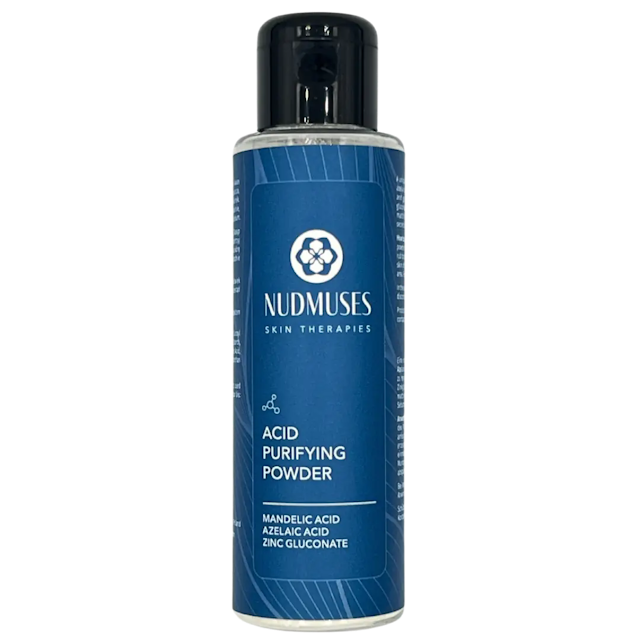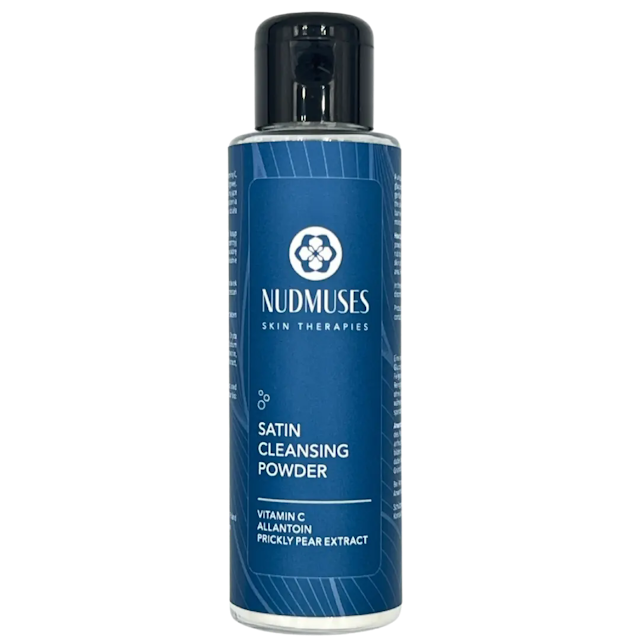
Mandelic Acid vs. Other Acids in Cosmetics
List of content:
Acids have been popular in skincare for years, appearing in many products such as facial peels, facial cleansing powders, and washing powders for the face. Scientific research confirms that proper use of acids supports skin exfoliation while improving its texture and tone. Mandelic acid, one of the gentlest AHAs, stands out for its effective action with a low tendency to cause irritation. In the following sections, we will compare it to other acids, discuss the differences in their effects, and show you how to choose the best facial peel. This will help you fully harness the beneficial properties of acids in your skincare routine.
What Is Mandelic Acid and What Are Its Benefits?
Mandelic acid, part of the alpha-hydroxy acid (AHA) group that also includes glycolic and lactic acids, has a larger molecular size, which makes it gentler than many other AHAs. It effectively supports skin exfoliation while minimizing the risk of irritation. It also enhances the absorption of other active ingredients and speeds up cell renewal, making it a valuable part of daily skincare. Due to its antibacterial properties, it is often recommended for acne-prone skin. Its moderate strength allows for safe use in products like facial cleansing powders, washing powders for the face, or facial peels. Being water-soluble, mandelic acid is well-suited for surface-level exfoliation of the epidermis.
Another key advantage is its notable mildness and versatility, making it an attractive option for different skin types. Unlike stronger acids such as glycolic acid, it carries a lower risk of causing intense exfoliation and irritation. Therefore, mandelic acid can be used on sensitive, redness-prone, or easily irritated skin. Regular use helps lighten hyperpigmentation caused by UV exposure or hormonal changes, restoring an even skin tone and giving the complexion a radiant appearance. Additionally, mandelic acid aids in regulating sebum production, reducing breakouts and assisting in acne control. Its surface-level exfoliation smooths the epidermis, diminishing the appearance of fine lines and minor acne scars. All these qualities make mandelic acid a key ingredient in skincare, providing visible and long-lasting benefits for skin health.
How to Use Mandelic Acid Safely
Safe use of mandelic acid primarily requires attention to its concentration. When you’re new to using acids, choosing lower concentrations—such as 3–5%—helps minimize potential irritation. The frequency of application is also important; most experts recommend using mandelic acid–based products two to three times per week. It’s worth noting that various formulas are available on the market, including facial cleansing powders or facial peels containing mandelic acid. If you have especially sensitive skin, it’s wise to monitor any reactions and introduce the acid gradually. Regular and moderate use yields better results and reduces redness. Consistent and systematic use of mandelic acid helps decrease fine lines, even out skin tone, and significantly improve the overall condition of the complexion.
Mandelic Acid vs. Other Acids – Differences and Similarities
Besides mandelic acid, three commonly used acids are glycolic, lactic, and salicylic acid.
Mandelic acid is milder compared to glycolic acid, which can penetrate the skin more deeply due to its smaller molecular size. While glycolic acid’s intensive exfoliation may benefit those dealing with noticeable discoloration, it is also more likely to irritate the skin. Lactic acid, also part of the AHA group, is known for its moisturizing properties and gentle exfoliation, making it suitable even for more sensitive skin types. Salicylic acid (a BHA), on the other hand, is oil-soluble and particularly effective at targeting blackheads and acne-related issues by penetrating pores.
The intensity of skin exfoliation depends largely on the molecular size and concentration of each acid. Glycolic acid, having the smallest molecules, penetrates the epidermis quickly, providing a strong exfoliating effect but with a higher chance of irritation. Although mandelic acid is also an AHA, its larger molecules make penetration less intense, thus gentler on the skin. Lactic acid often offers similar hydrating benefits and is recommended when you need mild exfoliation plus moisture. Salicylic acid, with its anti-inflammatory properties, is very effective for blemishes, making it ideal for oily, congested, or acne-prone skin.
The safety of these acids depends on both individual skin tolerance and choosing the right concentration. Mandelic acid, recognized for its mild action, is frequently suggested for those who are new to using acids, as it is less likely to cause strong irritation or redness. Although highly effective, glycolic acid can be too potent for sensitive skin. Lactic acid, prized for its hydrating ability, helps avoid dryness. Meanwhile, salicylic acid can be very effective in cleaning pores and controlling oil, but it requires caution for those with skin prone to dryness.
Cleansing Powders and Washing Powders with Mandelic Acid
Cleansing powders and washing powders for the face containing mandelic acid are innovative cosmetic formulas that offer effective yet gentle skin exfoliation. Thanks to the action of mandelic acid, these products gently remove dead skin cells, help reduce blemishes, and generally improve skin condition. Simply mix the powder with a small amount of water to create a light cleansing foam or paste, making it an excellent addition to your skincare routine.
One product worth noting is the Acid Purifying Powder from Nudmuses, which combines an optimal concentration of mandelic acid with other active ingredients. It effectively promotes exfoliation and gives skin a fresh, more radiant appearance. Additionally, it boosts the effectiveness of subsequent skincare steps by making it easier for nourishing ingredients to penetrate deep into the epidermis. A powder or facial peel like this is a great way to maintain healthy, smooth, and evenly toned skin. Mandelic acid in this form is easy to apply and causes minimal irritation, making it an ideal solution for many skin types.
Mandelic acid is characterized by its gentle yet effective action, setting it apart from other acids. It provides safe skin exfoliation, helping reduce discoloration and combating acne while minimizing the risk of irritation. Thanks to these acids, your skin becomes smoother and more radiant. It’s worth choosing products like facial cleansing powders, washing powders for the face, or a facial peel, always being mindful of selecting the right acid concentrations. Conscious use of acids will ensure a healthy, glowing complexion.

